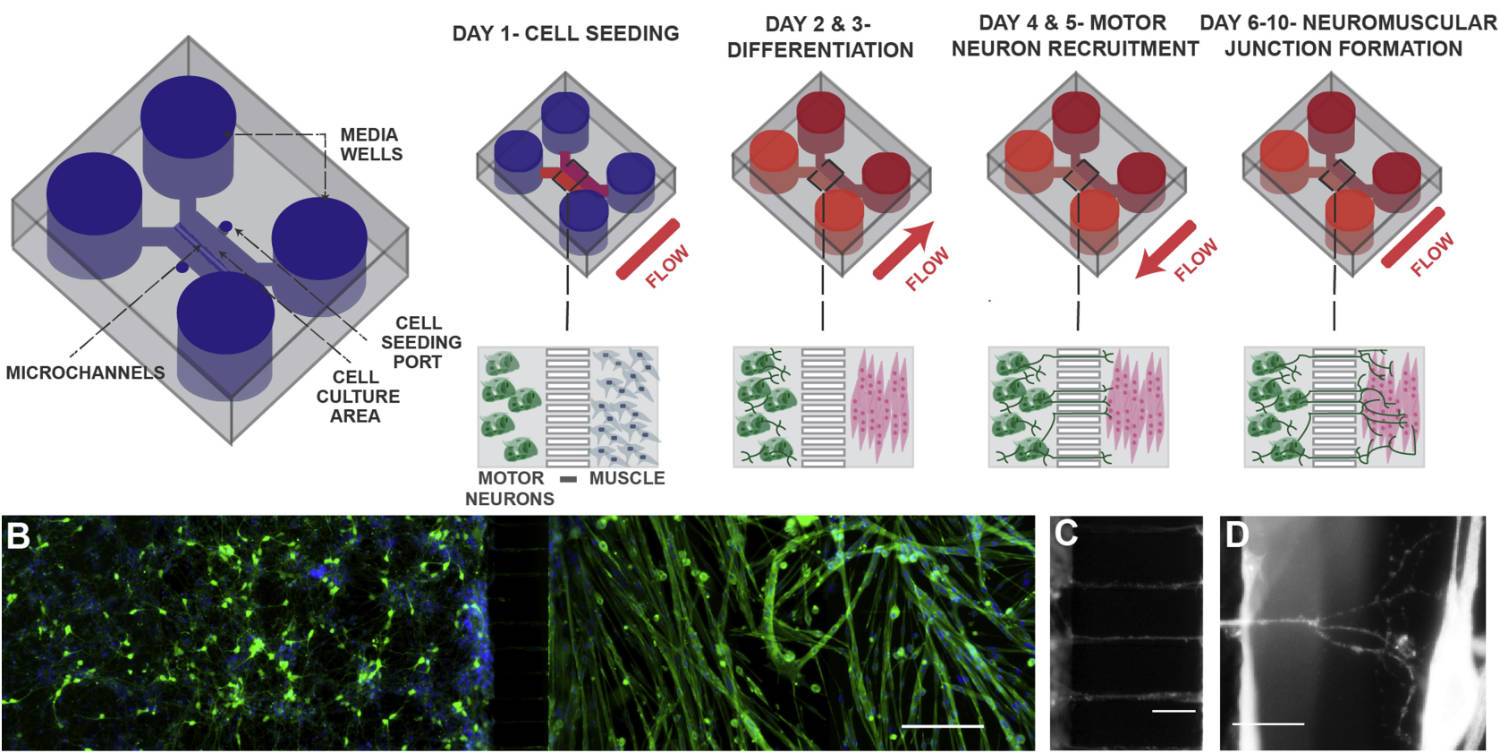How brain makes muscle move. And vice versa.

Objective: We examined whether skeletal muscle overexpression of PGC-1α1 or PGC-1α4 affected myokine secretion and neuromuscular junction (NMJ) formation.
Methods: A microfluidic device was used to model endocrine signaling and NMJ formation between primary mouse myoblast-derived myotubes and embryonic stem cell-derived motor neurons. Differences in hydrostatic pressure allowed for fluidic isolation of either cell type or unidirectional signaling in the fluid phase. Myotubes were transduced to overexpress PGC-1α1 or PGC-1α4, and myokine secretion was quantified using a proximity extension assay. Morphological and functional changes in NMJs were measured by fluorescent microscopy and by monitoring muscle contraction upon motor neuron stimulation.
Results: Skeletal muscle transduction with PGC-1α1, but not PGC-1α4, increased NMJ formation and size. PGC-1α1 increased muscle secretion of neurturin, which was sufficient and necessary for the effects of muscle PGC-1α1 on NMJ formation.
Conclusions: Our findings indicate that neurturin is a mediator of PGC-1α1-dependent retrograde signaling from muscle to motor neurons.
Neurturin is a PGC-1α1-controlled myokine that promotes motor neuron recruitment and neuromuscular junction formation
Mills R, Taylor-Weiner H, Correia JC, Agudelo LZ, Allodi I, Kolonelou C, Martinez-Redondo V, Ferreira DMS, Nichterwitz S, Comley LH, Lundin V, Hedlund E, Ruas JL, Teixeira AI
Mol Metab. 2018 Jan;7:12-22




